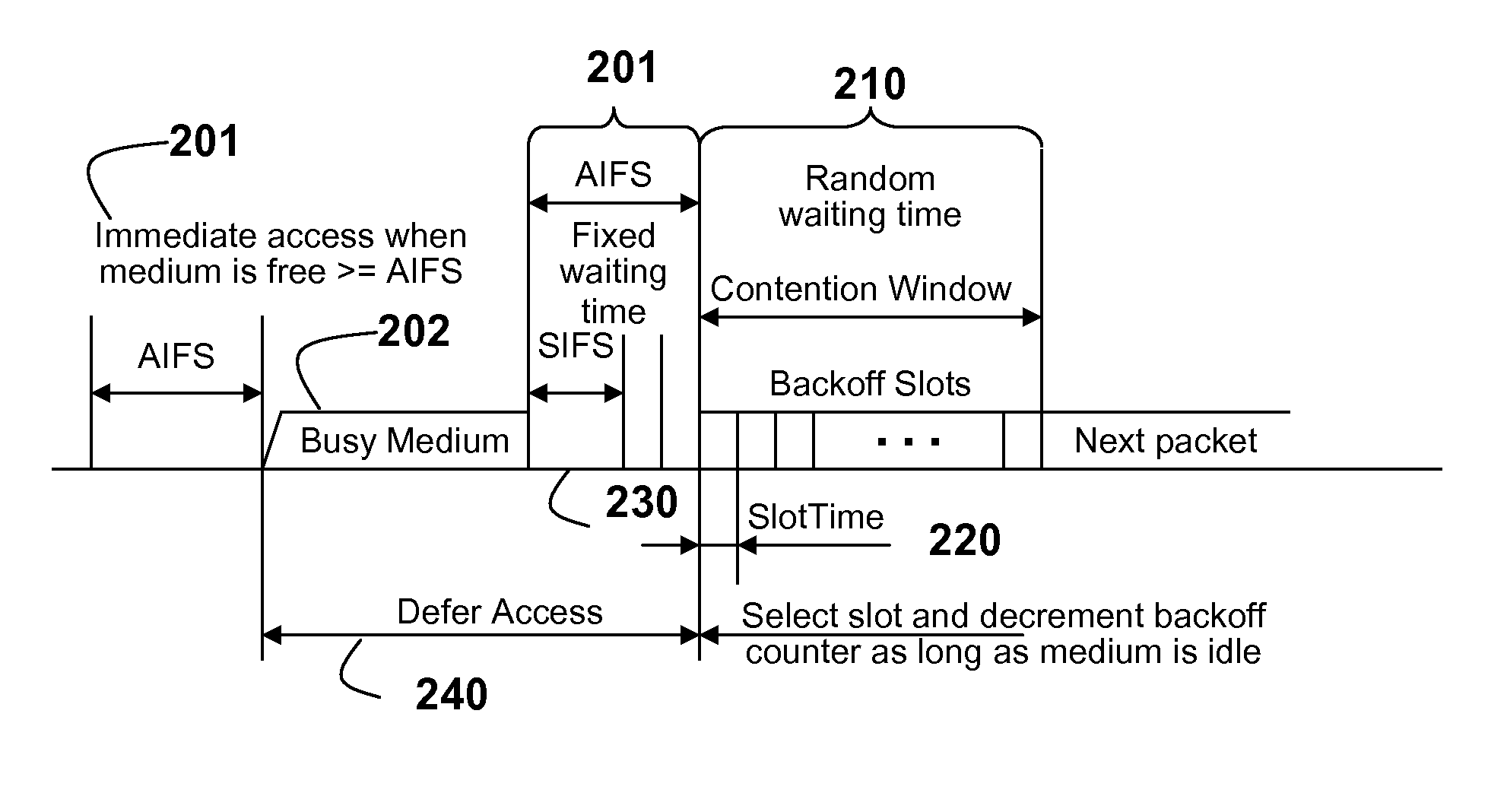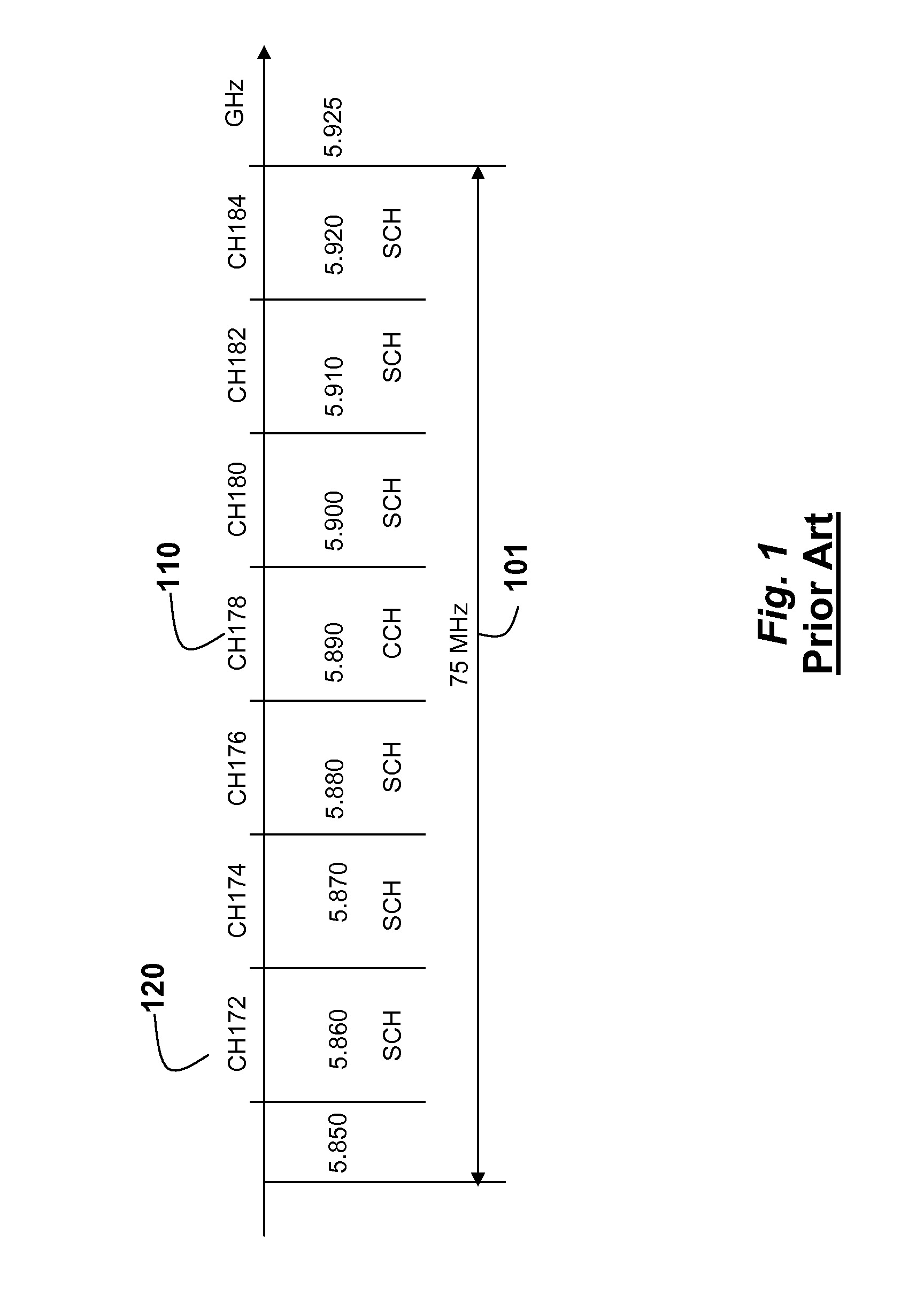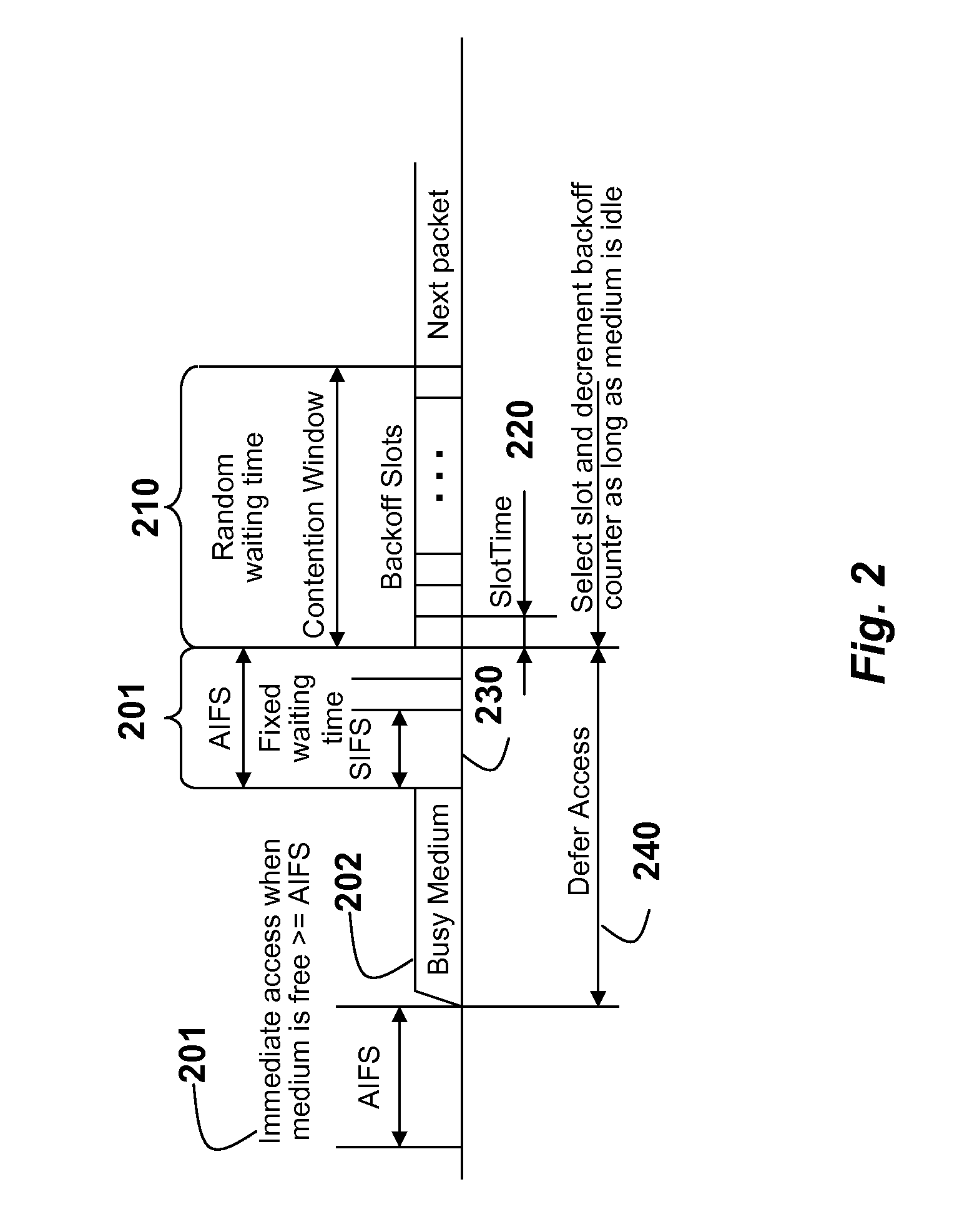Signaling for Safety Message Transmission in Vehicular Communication Networks
a technology of safety message and transmission signal, applied in the field of wireless communications, can solve the problems of packet drop, long latency is channel congestion, unpredictable channel access delay, packet drop, etc., and achieve the effect of reducing latency, increasing the reliability of high-priority safety message, and reducing latency
- Summary
- Abstract
- Description
- Claims
- Application Information
AI Technical Summary
Benefits of technology
Problems solved by technology
Method used
Image
Examples
Embodiment Construction
[0028]Radio frequency spectrum has been dedicated for intelligent traffic system (ITS). The U.S. allocates 75 MHz in 5.9 GHz bands, Europe allocates 30 MHz in 5.9 GHz bands and 20 MHz in 5.8 GHz bands, and Japan allocates 80 MHz in 5.8 GHz bands. The allocated bands are used for vehicle-to-vehicle (V2V), vehicle-to-roadside (V2R) and roadside-to-roadside (R2R) ITS applications. Two ITS standards are under development, for the U.S. IEEE WAVE, and for Europe CALM. Both WAVE and CALM support multi-channel operations. WAVE supports two types of channels: control channel (CCH) and service channel (SCH). CALM supports three types of channels: CCH, SCH and auxiliary channel (ACH). For WAVE, seven 10 MHz channels are planed with one CCH and six SCHs as shown in FIG. 1.
[0029]CCH is used for high priority messages, control messages and management messages in both WAVE and CALM. Periodic “heartbeat” messages are transmitted on the CCH every 100 milliseconds. Service announcement messages, and ...
PUM
 Login to View More
Login to View More Abstract
Description
Claims
Application Information
 Login to View More
Login to View More - R&D
- Intellectual Property
- Life Sciences
- Materials
- Tech Scout
- Unparalleled Data Quality
- Higher Quality Content
- 60% Fewer Hallucinations
Browse by: Latest US Patents, China's latest patents, Technical Efficacy Thesaurus, Application Domain, Technology Topic, Popular Technical Reports.
© 2025 PatSnap. All rights reserved.Legal|Privacy policy|Modern Slavery Act Transparency Statement|Sitemap|About US| Contact US: help@patsnap.com



